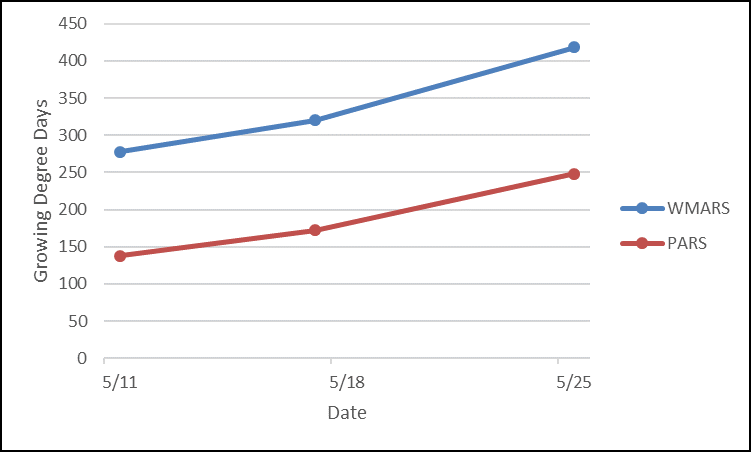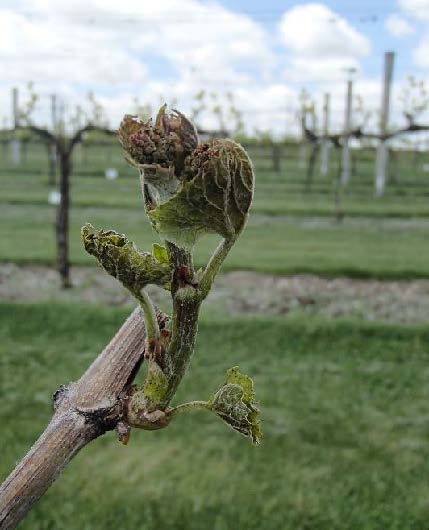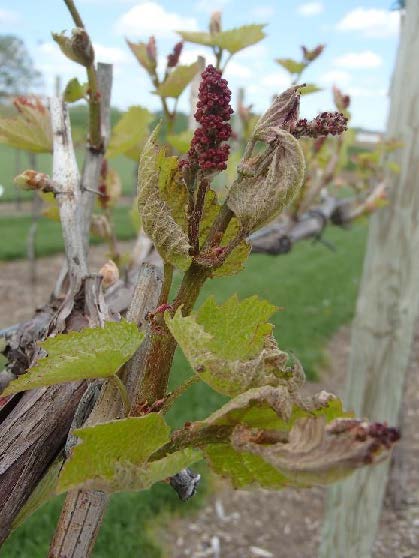Wine and Table Grape Developmental Stages
As mentioned in the “supplemental” issue of the Wisconsin Fruit News, published on May 17th, there was some damage from frost at West Madison Agricultural Research Station since the last developmental stage photos were taken. We were out on May 17th to see how different grape varieties had fared: Brianna grapes seemed to be hit especially hard (do you have a percentage of damage? I don’t think that any variety presented damage over 10%), possibly due to their developmental stage at the time, location, or some other factor. St. Croix showed the least damage, with only a few vines affected and the damage seen being less severe.
The following photos were taken on May 17th at West Madison Agricultural Research Station.
Subsequently, we were out at WMARS again on May 24th to see how the vines have been recovering from the frost. Aside from the vines located in low spots in the vineyard, which had more damage than the vines located in higher spots, there wasn’t much damage.
Healthy shoots are expanding rapidly as a consequence of the warmer temperature we have experienced in the last 2 weeks, and the inflorescences are beginning to be visible. Brianna variety appears to be slightly behind the other varieties we looked at: Brianna vines are at E-L* developmental number 12 (5 leaves separated, inflorescences clear), while the other cultivars are at E-L developmental number 13 (6 leaves separated, inflorescences clear).
* Eichhorn-Lorenz Phenological stages to describe grapevine development
The following photos were taken on May 24th at West Madison Agricultural Research Station.
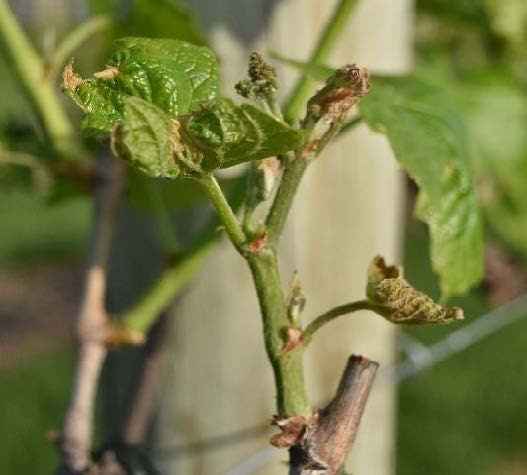
Brianna at WMARS; “3 leaves separated from shoot” E-L number = 9;
may produce fruit despite frost damage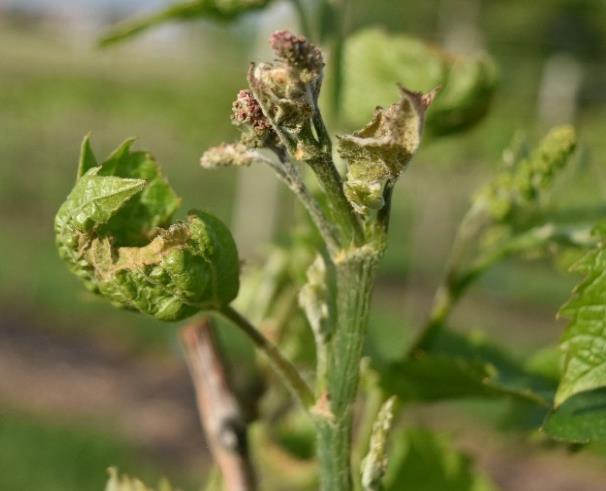
La Crescent at WMARS; “6 leaves separated, inflorescence clear” E-L number = 13;
unlikely to recover from severe frost damage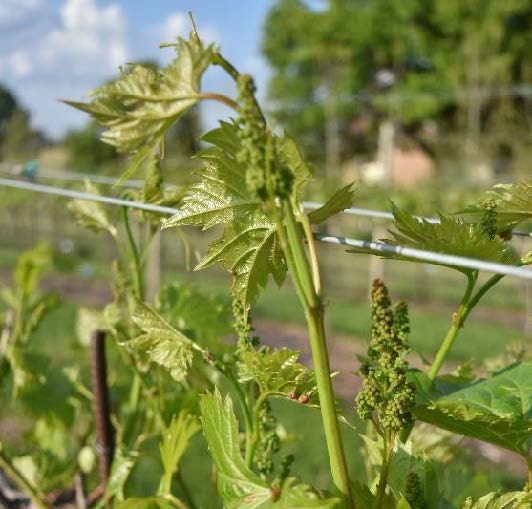
Frontenac at WMARS; “6 leaves separated, inflorescence clear” E-L number = 13 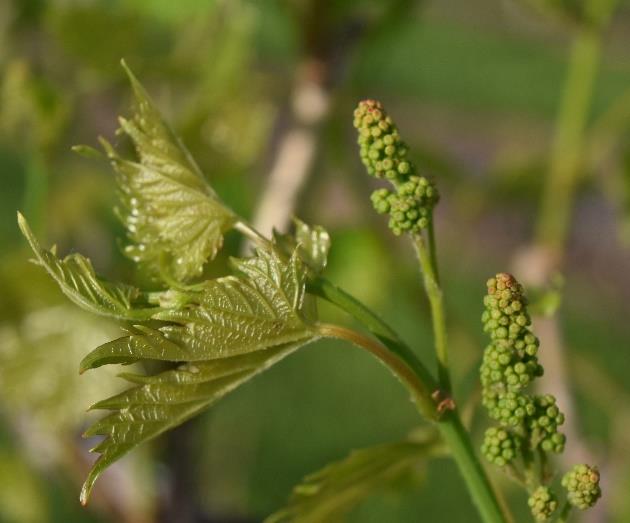
Frontenac inforescence at WMARS 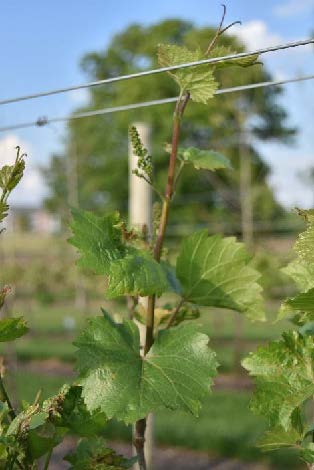
Marquette at WMARS; “6 leaves separated, inflorescence clear” E-L number = 13 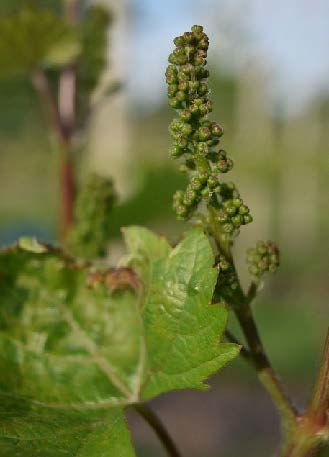
Marquette inflorescence at WMARS 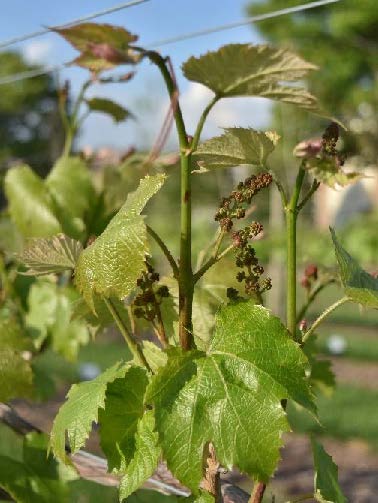
St. Croix at WMARS; “6 leaves separated, inflorescence clear” E-L number = 13 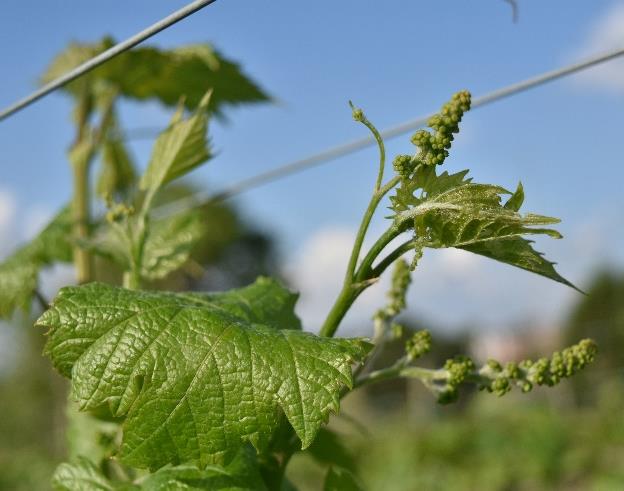
La Crescent at WMARS; “6 leaves separated, inflorescence clear” E-L number = 13 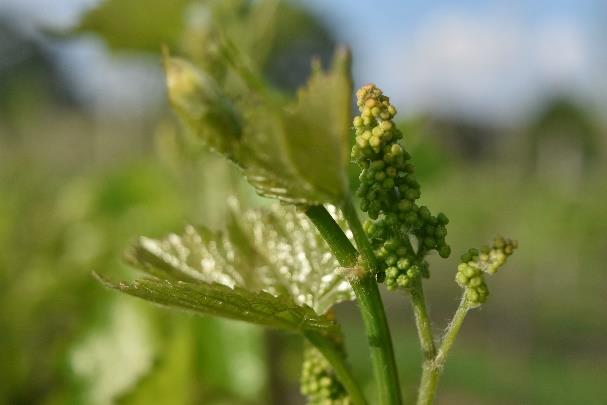
La Crosse at WMARS; “6 leaves separated, inflorescence clear” E-L number = 13 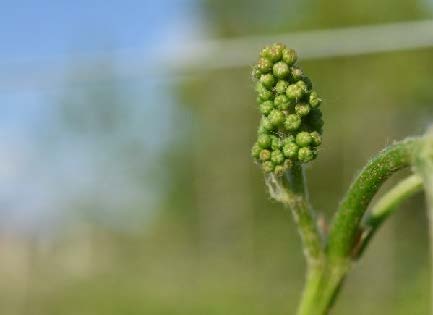
Brianna inflorescence at WMARS; “5 leaves separated” E-L number = 12 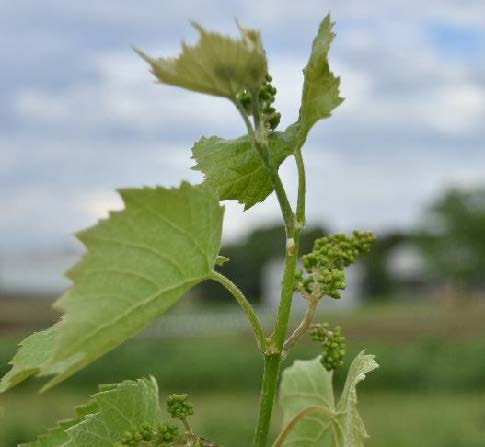
Somerset at WMARS; “6 leaves separated, inflorescence clear” E-L number = 13 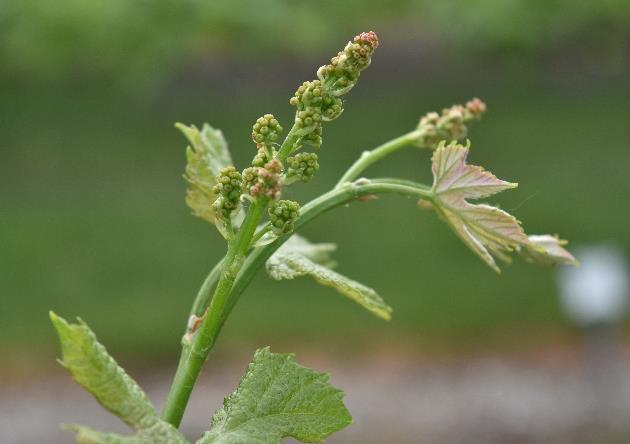
Einset at WMARS; “7 leaves separated, inflorescence clear” E-L number = 14
The buds at the Peninsular Research Station are still much further behind. Most cultivars are at E-L developmental number 9 (2-3 leaves separated, shoots 2-4 cm. long). Similar to at WMARS, the Brianna vines at PARS are a little bit behind the other cultivars; Brianna vines are al E-L developmental number 4 or 7 (budburst to first leaf separated from shoot tip). Some flea beetle damage was seen, and we were even able to get the following picture of the perpetrator itself.
The following photos were taken on May 25th at the Peninsular Agricultural Research Station.
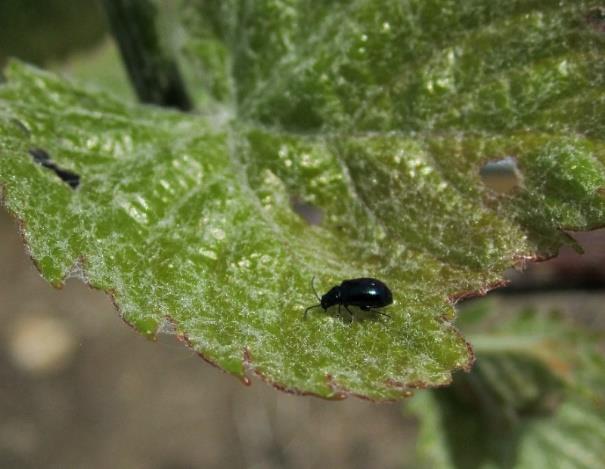
Flea beetle at PARS 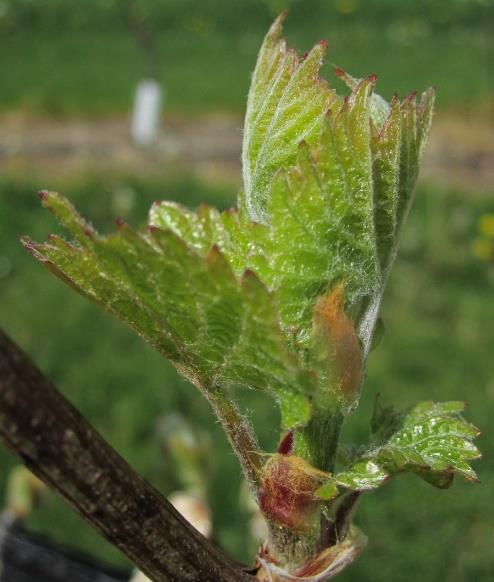
Marquette at PARS; “2-3 leaves separated” E-L number = 9 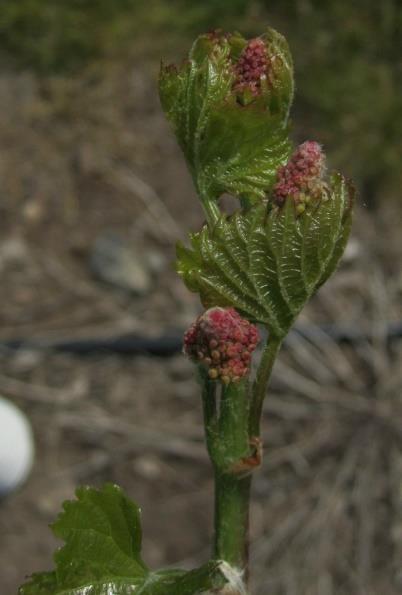
Frontenac at PARS; “2-3 leaves separated” E-L number = 9 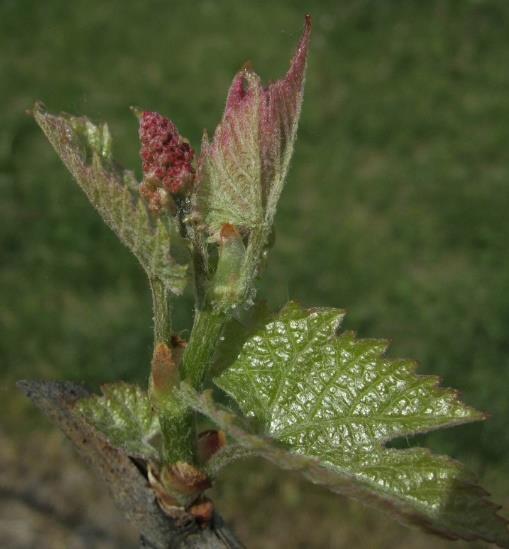
St. Croix at PARS; “2-3 leaves separated” E-L number = 9 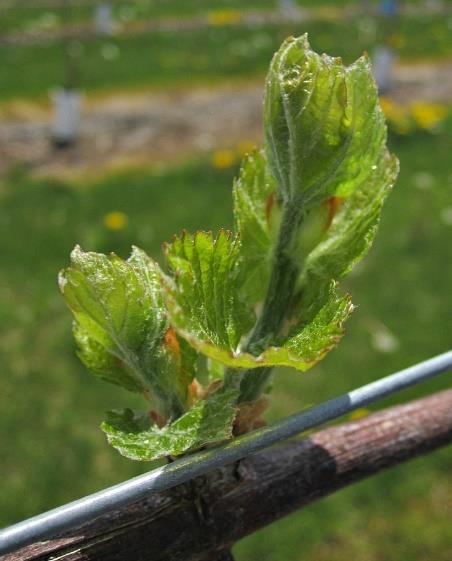
La Crosse at PARS; “2-3 leaves separated” E-L number = 9 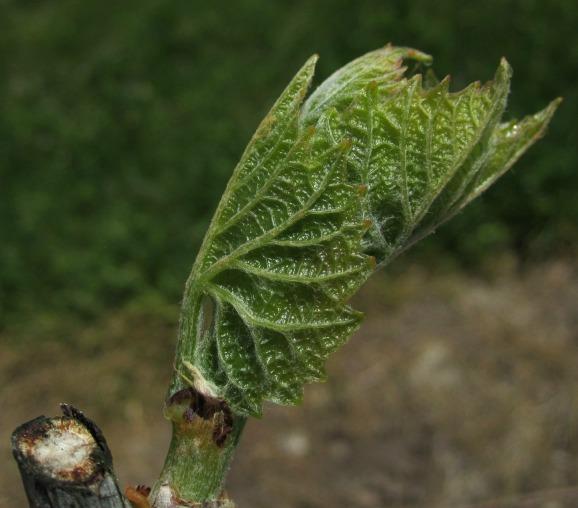
Brianna at PARS; “budburst” E-L number = 4 
